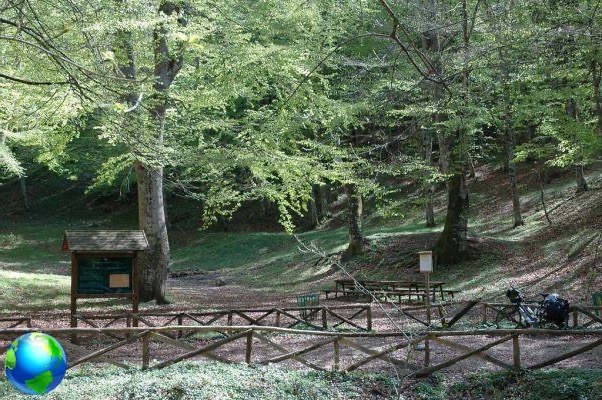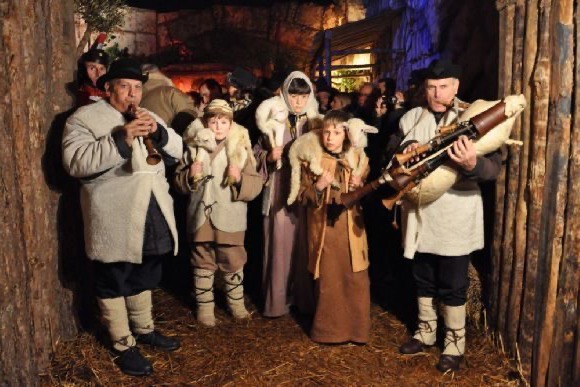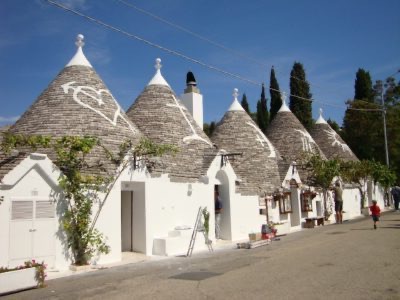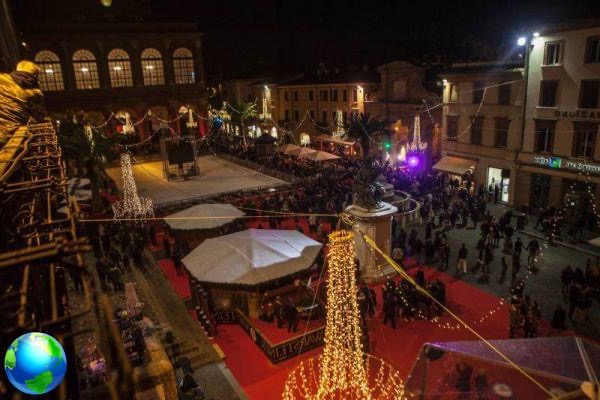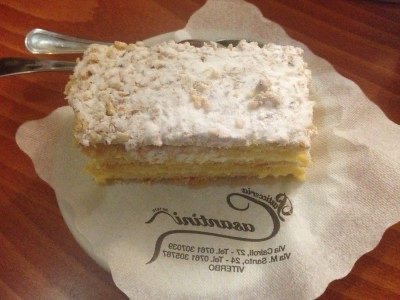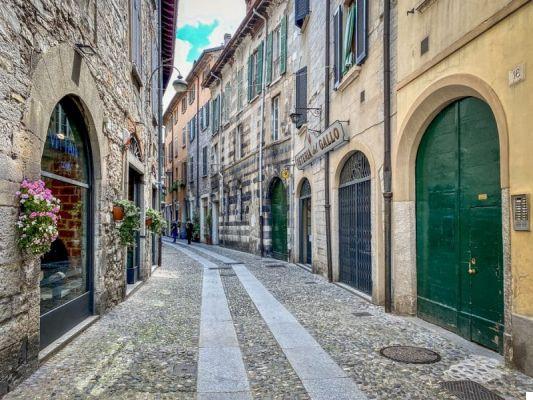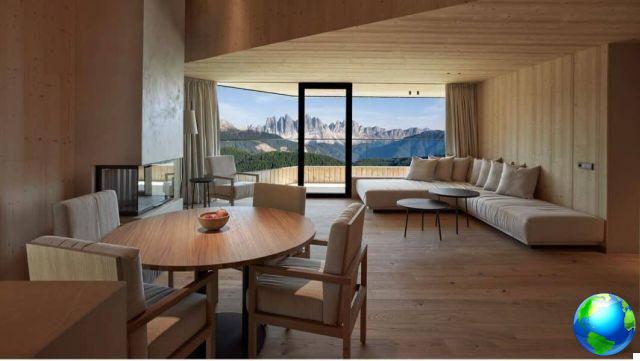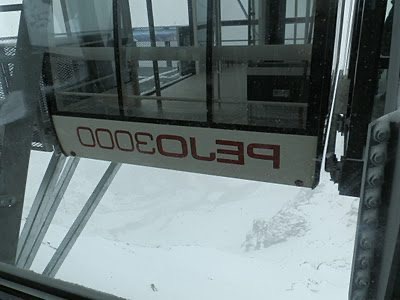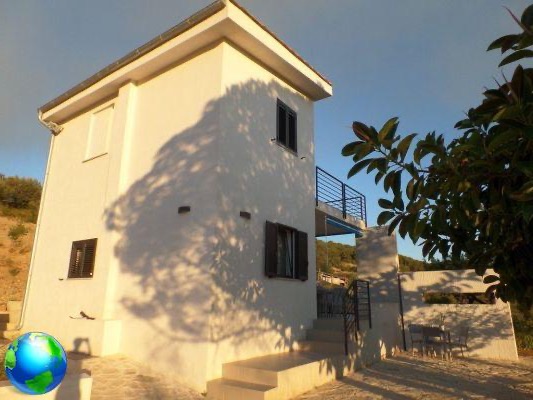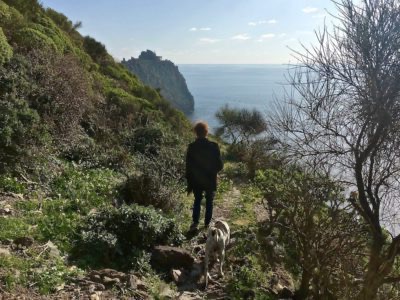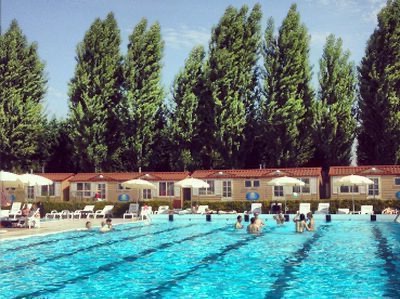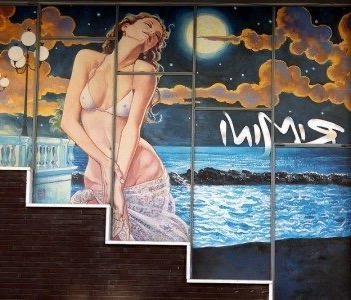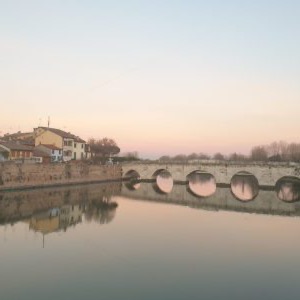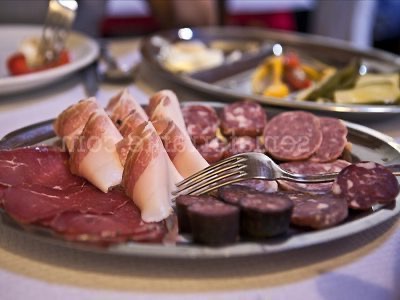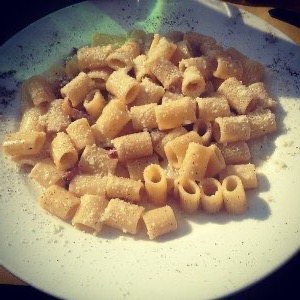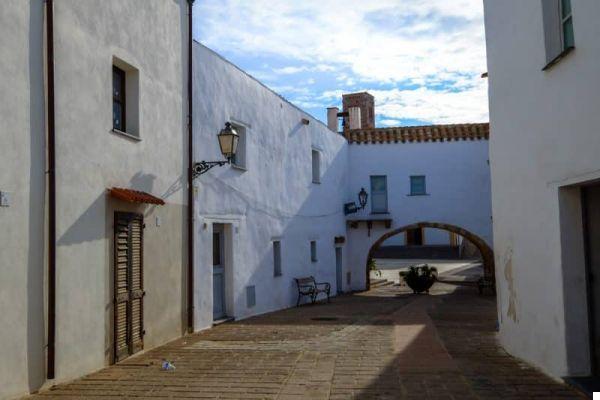"Stretched out at the bottom of its abyss with the careless majesty of a queen... Genoa comes, as it were, to meet the traveler" (A. Dumas, 1841). It is a pity that travelers, most of the time, cross it in haste, preferring other places in Liguria, such as the Cinque Terre or Portofino, thus missing the opportunity to discover a city rich in history, hidden treasures, suggestive corners. The history of Genoa is told especially long Via Garibaldi and the Rolli, home to wonderful residences little known to Italians but full of extraordinary works of art.
The charm of this city squeezed between mountain and sea, fragmented between past and present, crossroads of different peoples and cultures (it is no coincidence that the medieval name of Genoa is Janua, or "gate" in Latin), has affected writers, poets and composers, who in their verses have spoken of its beauty, its contrasts, its hidden soul. First of all Fabrizio de André, who today is celebrated with a small but wonderful museum in Via del Campo 29. Although Genoa is known above all for its Aquarium, the ancient maritime republic contains within its walls wonderful testimonies of its glorious past, but also bold and modern works that have made it a kind of capital of modern Italian architecture.
So, strolling through the city you will admire noble palaces and ancient churches, get lost in the labyrinth of characteristic alleys (carriages) in which the core of the old city is organized, visit interesting museums, be amazed by the symbols of the new Genoa, looking to the future but superb guardian of an ever-present past. Do not forget that with the Genoa Museum Card for only 15 € you can visit 28 museums (the most important of the city) and travel free on public transport.
1.- The Lantern of Genoa
Proof of the seafaring vocation of this city is its lighthouse, commonly called "the Lantern", which has always been the symbol of Genoa. Standing 77 meters high, the historic tower rises on the remains of a 40-meter hill, making it approximately 177 meters above sea level.
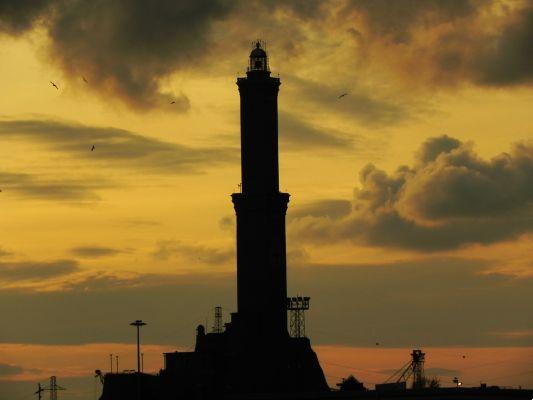
Created to notify ships entering the port but also to control their movement within it, the tower was built in the 14th century on the site where a lighthouse had already existed since 1128 with a firewood system (bonfires). In 1326 the first oil (olive) lantern was installed and in 1340 the municipal coat of arms was painted on the lower part of the tower. Its current appearance is the result of the reconstruction carried out in the sixteenth century and, despite the interventions after the war and lightning, the Lantern retains the appearance it had then: a tower with two slender volumes superimposed with a gallery at the top of each of them (access to the first terrace), an interior staircase of 172 steps, a lantern inside which are located the lighting elements.
Attached to the tower is the Lantern Museum, a multimedia museum dedicated to the city and the provincial territory, which is accessed by a walk of about 800 meters from the Ferry Terminal along the ancient walls to the lighthouse.
Opening hours and ticket prices for the Lantern of Genoa
Opening hours: Tuesday to Sunday and public holidays from 10 am to 6 pm (last entrance at 5.30 pm).
closed: Monday
Ticket cost: 8 €. Or 15 € with the Genoa Museum Card which includes 28 museums of the city and public transport.
How to get there: At the port of Genoa. Walk to the ferry terminal.
By bus or subway stop Buozzi 2/Metrò Dinegro or Dinegro/Terminal Ferries.
2.- The historic center of Genoa
The historic center of Genoa is the core of the old town, a place full of history and charm that after years of neglect and degradation has finally been restored and returned to the city. To discover the charm of old Genoa you have to walk on foot and enter the "caruggi", the picturesque narrow streets of medieval origin, and the characteristic Creuzà (narrow streets between the walls), get lost in the beautiful streets flanked by noble buildings and in the harmonious squares (Piazza delle Erbe, Piazza San Donato) dominated by ancient churches (San Donato, San Matteo).
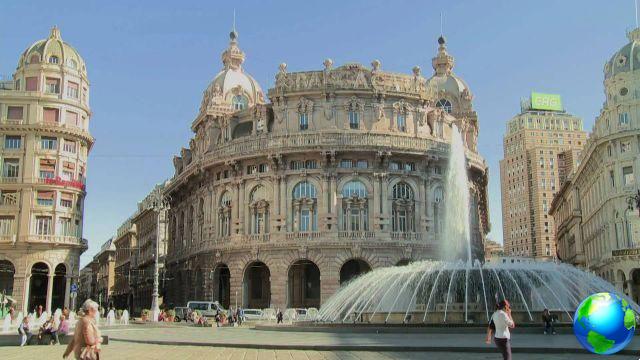
It is not by chance that a large part of the historic center has been declared World Heritage. There are many sites of historical interest such as the Castrum, i.e. the first urban settlement of the city dating back to Roman and Etruscan times, the architectural heritage of great value with the famous Palazzo Spinola and Palazzo Ducale, two magnificent city buildings through which relives the splendor of the ancient maritime republic. Recreational opportunities are not lacking either, since throughout the historic center there are plenty of characteristic inns where you can taste the typical dishes of Genoese cuisine, historic bars, places where bands play every night and stores over 100 years old that conquer and fascinate with their charm of yesteryear.
3.- The Genoa Aquarium
The Aquarium is Genoa's main tourist attraction. Inaugurated in 1992 in the area of the old port, the Genoa Aquarium is the largest Italian aquarium and the second largest in Europe, after that of Valencia.

The marine park houses 12,000 specimens of 600 different species (not only marine species but also rainforest and freshwater animals) in a spectacular setting that faithfully reproduces their original natural habitats. Visiting the Aquarium is a fun and exciting experience as it offers the possibility of getting to know the aquatic fauna by "walking" in the most fascinating seas and waters of the world. The path between the different pavilions of the Aquarium meanders through the more than 70 exhibition tanks where you can also observe sharks, seals, turtles, penguins andeducational areas that integrate the visual experience with scientific notions. The newly opened Cetacean Pavilion designed by Renzo Piano to admire the cute marine mammals both from an underwater perspective, thanks to the basement tunnel, and from an overhead perspective that allows you to see the dolphins out of the water.
Opening times and ticket prices for the Genoa Aquarium
Opening hours: from 9 a.m. to 6 p.m. In the Covid period, access is exclusively by online booking through the official website https://www.acquariodigenova.it/pianifica-la-tua-visita/
closed: Monday
Ticket cost: 27€ adults - 4 - 12 years 19€. Free 0 - 3 years.
How to get there: From the port of Genoa.
Bus: line n° 1, 12 and 13 with terminus in front of the Aquarium;
Subway: San Giorgio stop;
FS: from Genova P. Principe station on foot for 15 minutes or by bus n. 1 for P.zza Caricamento. From Genoa Brignole station bus n. 12 and 13 for P.zza Caricamento.
4.- Via Garibaldi and Strada Nuova Museums in Genoa
The beautiful Via Garibaldi, the "New Road" of the mid-sixteenth century, also called "Via Aurea" for the splendor of its buildings (the splendid Palazzo Cambioso and Palazzo Carrega-Cataldi) houses the unique museum itinerary dedicated to ancient art that connects the three historic residences owned by the municipality: Palazzo Rosso, Palazzo Bianco and Palazzo Doria Tursi . In the first building, the 17th century residence of the Brignole - Sale family, are preserved the historical furniture and art collections that the noble family gathered for more than two centuries. On display are works by Van Dick, Veronese, Guercino, Strozzi, Dürer.
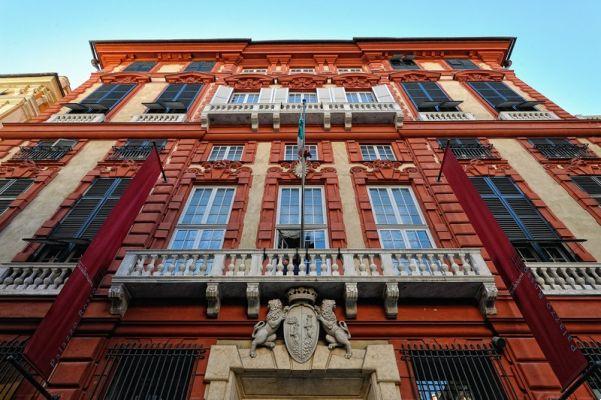
White Palace houses a valuable collection of Italian painting (you can not miss Ecce homo by Caravaggio), Flemish(Rubens, Van Dick, Memling), Dutch (Steen), French (Vouet) and Spanish(Murillo) from the sixteenth to the eighteenth century.
Finally, the aristocratic Palazzo Tursi, besides housing the Mayor's meeting rooms, has a remarkable display of decorative arts (ceramics, tapestries) and houses the "Cannon shot", the famous paganini violin built in 1734 by the luthier Bartolomeo Giuseppe Guarnieri and the "Penitent Magdalene" by Canova.
Opening hours and ticket prices for the Strada Nuova Museums
Opening hours: Tuesday to Friday from 9.00 am to 7.00 pm, Saturday and Sunday from 10.00 am to 7.30 pm.
closed: Monday.
Ticket cost: 15€ with the Genoa Museum Card which includes 28 museums of the city and public transport.
How to get there: Via Garibaldi, in the center of Genoa.
Bus: Stop Piazza Fontane Marose - Stop Piazza Portello
Subway: Piazza Ferrari stop
5.- The Palazzi dei Rolli in Genoa
The Palazzi dei Rolli are none other than the beautiful residences of the Genoese nobility that in the late sixteenth and seventeenth centuries offered hospitality to illustrious people passing through the city.
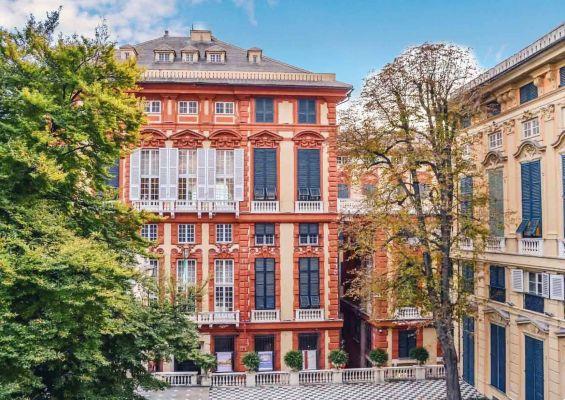
The residences (more than one hundred) that the Republic of Genoa had destined for this purpose were included in special lists (Rolli of Public Housing) that were periodically updated. For their architectural value and sumptuousness, the Palaces were divided into three categories (bussoli), each corresponding to a certain category of guest: first bush for cardinals, princes and viceroys; second bush for feudal lords and governors; third for princes and ambassadors.
Since 2006, forty-two of these prestigious buildings "articulated in the sequence atrium - courtyard - staircase - garden and rich in interior decoration", have been recognized by UNESCO as "World Heritage Sites as anexpression of a unique social and economic identity that inaugurates the urban architecture of the Modern Age in Europe". A walk via Balbi, Garibaldi, Lomellini and San Luca will lead you to discover these historic houses and a rich past that has made hospitality a cultural reference.
The palaces can be visited during the Rolli Days organized by the Municipality of Genoa almost every weekend.
6.- Galata - Museum of the Sea of Genoa
A further testimony of Genoa's link with the sea is the Galata Museo del Mare,the largest maritime museum in the Mediterranean dedicated to the history of navigation.
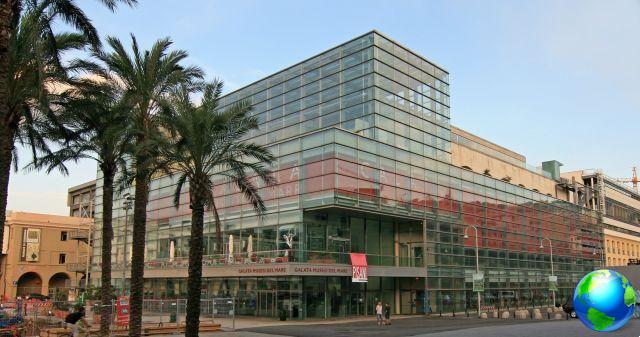
Through thereproduction and display of ships of all sizes and types, nautical instruments and charts, multimedia and interactive stations, the museum offers visitors a real journey through time, allowing them to identify with the life of sailors, passengers and migrants.
The tour begins on the first floor from the era of the rowing boats, continues on the first and second floor on the route of sailing ships and revolutionary geographical explorations and ends on the third floor dedicated to the voyage to America. Do not miss the panoramic terrace Mirador to enjoy a splendid view of the harbor and the city. So how could you miss this interesting and endearing museum, in the city where Christopher Columbus, the greatest navigator of all time, was born? The latest addition is the submarine S518 Nazario Sauro, the only one that can be visited at sea.
Galata opening hours and ticket prices
Opening hours: daily: Monday to Friday from 11 am to 7 pm (last entrance at 6 pm). Weekends and holidays from 10 am to 7 pm (last entrance at 6 pm).
closed: Monday
Ticket cost: 13€ adults (19€ with submarine)
4 - 12 years old 8€ (14€ with submarine).
Free from 0 to 3 years old.
15 with the Genoa Museum Card which includes 28 museums of the city and public transport.
How to get there: Calata De Mari, 1 (Darsena - Via Gramsci).
FS train: Genova P. Principe station then 5 minutes walk.
Train station Genova Brignole, then bus 18, 20 to Sampierdarena
Subway: Darsena Station
Bus
bus n° 1, 18 Gramsci stop 2
bus n° 20, 35, 34, 32 Fermata Balbi stop 2
7.- San Lorenzo Cathedral in Genoa
The majestic and solemn Cathedral of San Lorenzo was built from the ninth century and was remodeled until the sixteenth century, which explains the juxtaposition of different architectural styles both inside and outside. In 1118 the church was consecrated by Pope Gelasius II.
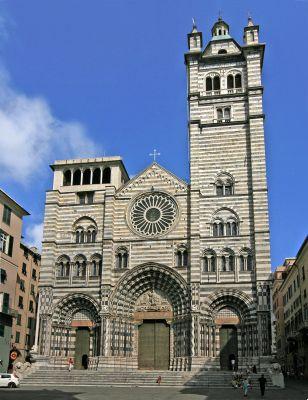
The city's cathedral presents itself to the visitor with its beautiful Gothic façade in the Genoese style (13th century) with French influences as evidenced by the arrangement of the portals and the central rose window. The lateral sides with the two portals date back to the Romanesque period, while the dome (designed by Galeazzo Alessi) and the bell tower date back to the 16th century. The interior, divided into three naves, contains innumerable sculptural and pictorial works. Along the left aisle is the chapel of San Giovanni Battista where the bones of St. Lawrence are kept; at the end of the right aisle one enters instead theMuseum of the Cathedral Treasury, which houses masterpieces of sacred art, including the Sacro Catino, whose legend identifies it with the Holy Grail, the Ark of the Ashes of St. John the Baptist and other objects related to the cult of the patron saint of the city.
In via Tommaso Reggio, between the Cathedral and the Ducal Palace, is the Diocesan Museum with archaeological remains and sacred objects. But it is worth a visit especially for the textile section with significant examples of the production that made Genoa famous throughout Europe. Above all, a look at the Leaves of the Passion, painted in 1538 on linen cloth dyed indigo blue, in practice the so-called canvas of Genoa, ie the famous pants that everyone thinks are American!
Hours and ticket prices of the Cathedral of San Lorenzo
Opening hours: daily from 8 am to 12 pm and from 3 pm to 7 pm.
Museum: Monday to Saturday from 9 am to 12 pm and from 3 pm to 6 pm.
Ticket cost: Cathedral free of charge.
Treasury Museum: 6 €.
Diocesan Museum: 6 €.
15 with the Genoa Museum Card which includes 28 museums of the city and public transport.
How to get there: Old Town. Piazza San Lorenzo.
8.- The Old Port of Genoa
This area was once the center of Genoa's mercantile activity. After the conversion carried out by Renzo Piano on the occasion of the colombiadí (celebrations of the fifth centenary of the discovery of America) in 1992, the Piazza di Genova on the Mediterranean has become a place dedicated to tourism and leisure.
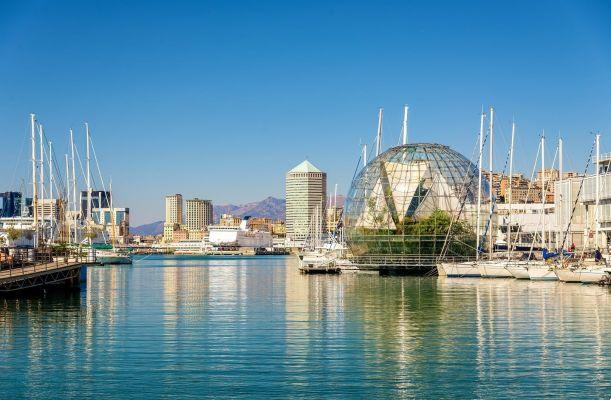
In fact, here they are: theAquarium, a major attraction for visitors of all ages; there Biosfera, the steel and glass bubble on the water designed by Piano that reproduces a tropical environment inside with a variety of tropical plants, but also butterflies and small animals (iguanas, birds); Galata, the largest and most innovative maritime museum in the Mediterranean; Renzo Piano's Bigo, the crane-like metal structure that stands out against the sea equipped with a panoramic elevator that has become one of the symbols of Genoa. However, the transformation of these places has not only involved the creation of modern works but also the revival of old port buildings, includingthe former cotton warehouses that today house cultural and recreational facilities such as the Children's City, the largest space in Italy dedicated to play, science and technology, for children from 2 to 12 years of age.
9.- Via del Campo and the places of André
Who has never heard"Via del Campo" by Fabrizio de André? The famous song talks about one of the places in Genoa historically dedicated to prostitution, with the story of a "pretty" woman who offers her services in an apartment in this street. In this street, where today many tourists pass distractedly, there was a record store owned by Gianni Tassio, a friend of De André who for decades spread his music and displayed in the window all the original album covers. After the death and management of his wife, today the store has become the Museum in Via del Campo 29 red.
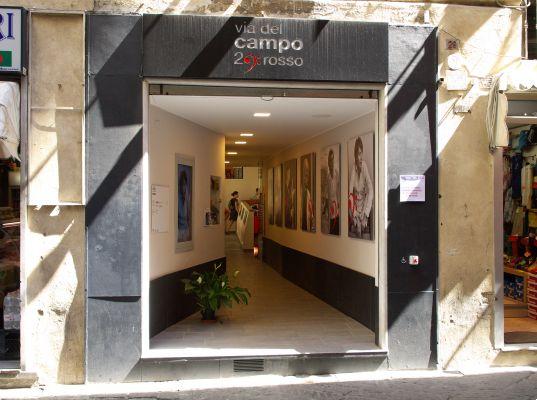
Obviously, there are other places in Genoa linked to de André: we begin with the district of Pegli, in via De Nicolay 12, dove una targa ricorda la casa natale di Faber. There is a plaque that remembers him and it is certainly a good place to start your journey in his footsteps. Another symbolic place is the district of Sant'Ilario, where "Bocca di Rosa" is set, the song that together with "Canzone di Marinella" is the most famous of Fabrizio de André. The old station mentioned in the song is in disuse but you can see the sculpture that pays homage to the song. In Piazza Cavour, instead, near the fish market, you can hear the cries of vendors and Genoese that de André recorded in Crêuza de mä.
Opening hours and ticket prices of the Via del Campo Museum
Open: Thursdays-Sundays: 10:30-12:30/15:00-19:00
Closed: Monday, Tuesday and Wednesday.
Ticket cost: free
10.- Bocadasse
If time permits, we recommend a walk of about 1 KM from the Foce, along Corso Italia that, between panoramic points, beaches and Liberty villas, leads directly to the village of Bocadasse. This small cove of colorful houses, fishing boats, restaurants and bars on the sea, resists the siege of concrete, preserving its appearance of a seaside village with an ancient air.
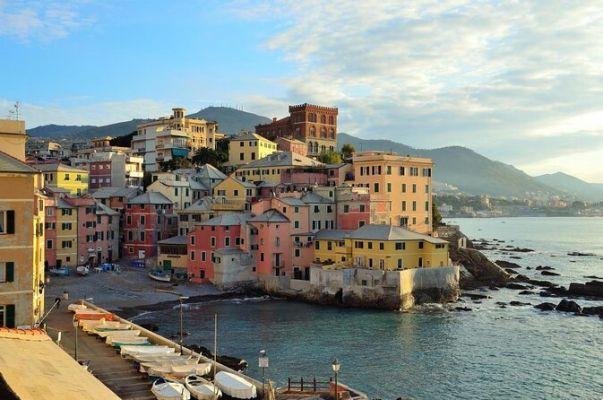
The village is dominated by the Church of Sant'Antonio da Padova, full of votive offerings left by sailors who survived shipwrecks and drownings. From the viewpoint in front you can enjoy a wonderful panorama of the village and the coast. From here you take Via Aurora, a typical Ligurian "crêuza", a downhill alley leading to the village of Boccadasse. It seems that the name derives from the fact that the stream Asse flowed here or from the Genoese "Bocca d'Asino". An evocative place, loved by photographers and artists from all over the world, Boccadasse is also the place narrated by Gino Paoli in the song "La Gatta".
In the village there is a small pebble beach with a clear sea, a bit crowded in the summer months, because residents and many tourists gather here in search of a refreshing dip after a stroll along Corso Italia.
How to get to Bocadasse
Strolling along Corso Italia.
Bus: number 31 from Genova Brignole station.
Double-deckertourist bus from the center of Genoa.
11.- The esplanade of the Castelletto
You can admire a beautiful view of Genoa from the esplanade of the Castelletto, above the city. Let's start with the name: here, until 1849, stood the Castelletto Fortress that the Genoese wanted to demolish because it was a strategic point from which to bombard and control the city in case of enemy occupation. The destruction of the liberated castle. the view of the entire city: the typical slate roofs of Genoa, the harbor, the sea and the hills behind. The three ways to reach the Esplanade are as fascinating as the destination itself.
By car you can reach it with the super-panoramic Circonvallazione a Monte. On foot you can reach it by climbing the creuze sung by Fabrizio de Andrè.
We recommend going up from Via Garibaldi (immediately after Palazzo Bianco) from where Salita San Francesco begins. Here you pass through small gardens, colorful houses, panoramic views until the road becomes Salita Castelletto and you approach your destination.
The least tiring and most "elegant" way to reach the esplanade is the elevator that goes up from Piazza Portello a stone's throw from Strada Nuova. An Art Nouveau elevator, all wood, iron and borders. it still retains the charm of the late 1800s. One of the things to do absolutely in Genoa, relying on what the poet Giorgio Caproni said: "When I decide to go to heaven I will go there with the elevator Castelletto...".
12.- The Monumental Cemetery
It does not happen very often to insert a cemetery in the tourist itineraries of a city: however, the one in Genoa is worth a visit. It is not by chance that it is defined Cimitero Monumentale, for the beauty of the architecture. The idea that motivated the construction of the cemetery, as we know it today, is the meeting of two different conceptions and types of cemetery: a place of collective memory, as dictated by the Enlightenment thought, and a place of personal reflection on death, according to the more romantic tradition.
Obviously Staglieno is also famous for the tombs of illustrious people, both Italian and foreign. Fabrizio de Andrè, Giuseppe Mazzini, Nino Bixio, Fernando Pivano are just some of the most famous names in the cemetery of Genoa. An inspiring place that has fascinated personalities such as Nietzsche, Guy de Maupassant, Mark Twain and Evelyn Waugh who visited Staglieno passing through Genoa.
A very big place so much so that it is also organized by thematic itineraries and you can take advantage of tourist guides. Some of the routes refer not only to the famous people, but also to the tombs with pets, those with flowers. An important space is given to the Risorgimento, with an area dedicated to the graves of many of the "Thousand" who left Genoa to unite Italy in 1861. But there are also areas for Resistance and World War II fighters as well as smaller cemeteries dedicated to other denominations (Protestant, Jewish).
Opening hours and how to get to the Monumental Cemetery of Genoa:
Opening hours: daily 7.30 a.m. - 5 p.m.
25 December and Easter: 7.30 am - 1.00 pm
closed: 1 and 6 January, Easter Monday, 24 June, 15 August, 26 December.
How to get there:
By car: Motorway: exit Genova Est.
By bus: Line 13 - 14 - 34 - 48
By train: Brignole station + bus line 14
Principe station + bus line 34
13.- The Genoa - Casella Train
The Casella train in Genoa is a must for lovers of trips aboard historic locomotives. The train runs along about 25 kilometers of narrow-gauge tracks departing from the center of Genoa near Piazza Manin from the station of the same name and arriving in Casella, a destination that many Genoese prefer for their trips outside the city.
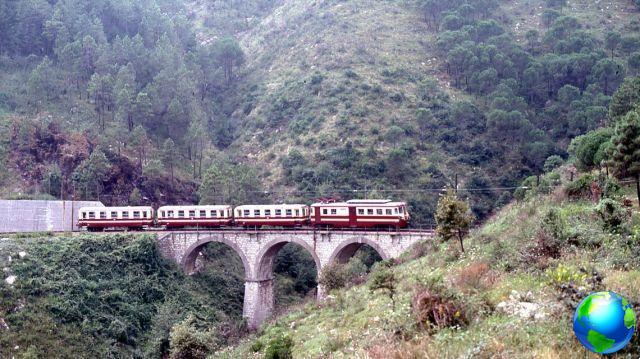
During the journey you will admire the green hills around Genoa, so arm yourself with a camera and enjoy the scenery from the window. The Casella train passes through valleys and small villages such as Sant'Olcese and other inland towns before arriving at the terminal.
The box is worth an enogastronomic stop in one of its trattorias, we highlight in particular the Antica Trattoria del Bado in via Canova, a rustic restaurant that offers traditional Ligurian dishes and has excellent reviews.
This attraction is recommended for families with children who are encouraged aboard the train, but also for lovers of hiking and nature excursions. In fact, from the various stops of the locomotive depart excursion routes, such as the walk to the Forts of Genoa from the station of Campi lasting about 4 hours or the walk to the Historical Aqueduct lasting one hour departing from the station of San Pantaleo which is the first stop of the train Casella.
Speaking of carriages, the lucky ones will travel in historic carriages with wooden interiors that will give a real step back in time, with the explanation of the railway volunteers.
Timetables and tickets for the Casella - Genoa train.
How to get there:
From Genoa P. Principe station: line 34, stop Piazza Manin.
From Genova Brignole station, take line 49 to Giardino/Montegrappa stop. Short walk to Piazza Manin.
Hours of Service
Timetables can be consulted on the attraction's official website: https://www.ferrovigenovacasella.it/geca/orari/
Ticket cost: from €3 to €4.50 depending on the zones.
Round-trip ticket for 3 persons 20 euros.
Roundtrip ticket for 4 persons 21 euros
24-hour ticket 14 euros
Tickets can be purchased both on site and online, an option we recommend to avoid the risk of finding the ticket office closed once you arrive on site.
14.- The Funicular Zecca - Righi
If Genoa reserves pleasant surprises, the Zecca Righi Funicular is definitely one of them. The plant connects Largo Zecca in the center near via Garibaldi, with Righi, hilly neighborhood that is located at an altitude of 300 meters.
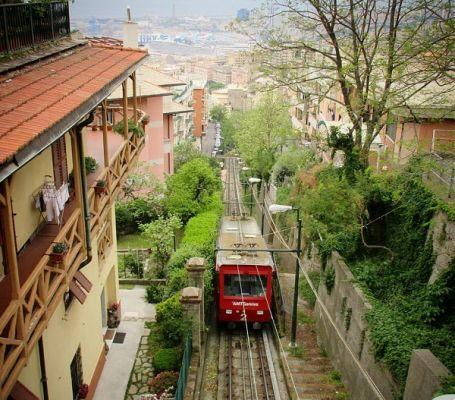
In our opinion, the funicular ride is an experience not to be missed because it allows you to admire Genoa from another point of view. The ride is already exciting in itself, but once you reach the top, the spectacle becomes rewarding.
Stop and admire the view of Genoa and you will understand why it was nicknamed"the superb": at your feet the old town, the port, the lantern and the rooftops of the city. The most evocative moment of the day to climb Righi? At sunset when the atmosphere is unparalleled.
Descending at the Madonnetta station, it is possible to reach the Sanctuary of the Madonnetta with the famous "perennial crib", a reconstruction of scenes of life in medieval Genoa.
The Zecca Righi funicular is an excellent way to spend a couple of hours in Genoa as a tourist, but not alone. If you are fond of naturalistic walks, you will surely appreciate the Righi for the network of trails that allow you to practice trekking in the area on foot and by mountain bike, in all seasons.
We point out in particular the trekking to the Forts of Genoa to be done preferably in spring or summer to enjoy it to the fullest. In the Righi you can also find the Adventure Park, the Astronomical Observatory and several places where you can stop and taste some good dishes of Ligurian cuisine.
Timetables and tickets for the Zecca - Righi funicular.
How to get there:
From Largo Zecca within walking distance of Via Garibaldi.
Hours of service:
Departures every quarter of an hour every day from 6.40 a.m. to midnight.
The funicular ride takes just over 15 minutes. The intermediate stations are: Carbonara, San Nicolò, Madonnetta, Preve and San Simone.
Ticket cost: all tickets valid on the urban network (except one-way tickets for the ski lifts and the Sant'Anna funicular).
15.- Villa Durazzo Pallavicini
For those visiting Genoa, Villa Durazzo Pallavicini is a must-see. It is located in the west of the city and can be easily reached by train (Genoa Pegli station stop).
The villa is the typical example of the residence of the Genoese aristocracy and is known mainly for its park, one of the leading historical gardens in Europe and "the most beautiful park in Italy" in 2017.
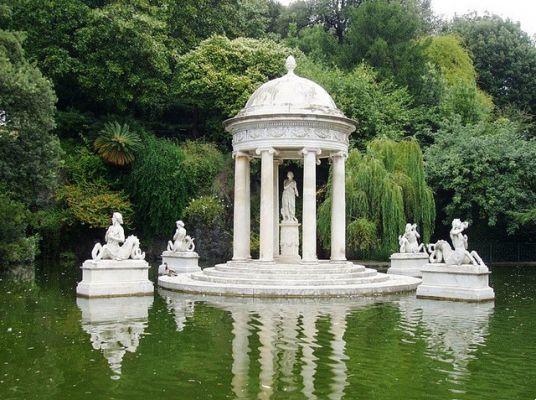
It was the marquis Ignazio Alessandro Pallavicini in the first half of the nineteenth century who commissioned the project to the architect Michele Canzio, who at the time was also a set designer at the Teatro Carlo Felice. not by chance the itinerary of visit inside the park of Villa Durazzo Pallavicini was structured in three acts, in the manner of a theatrical play.
The villa can be visited both independently by following the well-signposted directions and by taking part in a guided tour, an option that we recommend in order to learn more about its history, anecdotes and curiosities.
The itinerary that, starting from the chosen entrance, leads to the discovery of the various attractions is suggestive: the Green Room originally used as a dining room, the Lago Vecchiola Sorgo, the castle of the captain with a strong symbolic meaning, the caves of hell reminiscent of Dante's Inferno and the Gardens of Flora. Stroll among centuries-old trees and admire a variety of flowers and plants, including rare camellias, which make a visit to the park even more evocative during the flowering period.
The tour is suitable for families with children who always admire with enthusiasm and curiosity the lakes, bridges, water games and other suggestive attractions. As for the duration of the guided tour of the scenographic-theatrical itinerary, estimated at about three and a half hours.
Opening hours and ticket prices for Villa Durazzo Pallavicini
Opening hours: the Park is open daily from February 26 to November 1.
closed: Monday. Opening hours are seasonal.
March 1st - March 27th
Tue to Fri 9.30-18.00
Sat-Sun and holidays 10.00-18.00
March 28th - September 30th
Tue-Fri 9.30-19.00
Sat-Sun and holidays 10.00-19.00
October 1st - November 1st
Tue-Fri 9.30-18.00
Sat-Sun and holidays 10.00-18.00
Ticket cost:
The ticket weekend is festivei: 13 € normal price. 6 € reduced for children from 7 to 18 years. Family ticket € 27 (2 adults + 1 child 7-18 years)
Weekday ticket: 11 € full price. 5 € reduced for children from 7 to 18 years old. Family ticket 24€ (2 adults + 1 child 7-18 years old)
Free: children up to 6 years old
16.- GAM Gallery of Modern Art Genoa
The Modern Art Gallery of Genoa (GAM) is part of the museum complex of Nervi to which belongs the Museo Giannettino Luxoro, the Wolfsonian collection and the Frugone Collections.
It is housed inside Villa Saluzzo Serra, a 16th century building that, in our opinion, alone is worth a visit for the beauty of the decor, the furnishings and the context in which it is immersed, within the historic parks of Nervi.
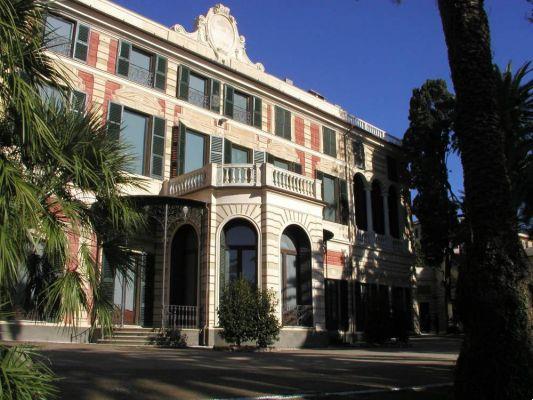
The exhibition rooms of the GAM, divided on three floors, host more than three thousand works of art between painting, sculpture and drawing made between the nineteenth and twentieth centuries by artists from Liguria and beyond.
As for painting, we mention the outdoor paintings by Tammar Luxor and Ernesto Rayper, the canvases of Plinio Nomellini, the Dutchman Petrus Henricus Theodor Tetar van Elven, Nicolò Barabino, Rubaldo Merello, Domenico Guerello and Plinio Nomellini.
In the field of sculpture, however, among the best known names are Arturo Martini, Giulio Monteverde and Santo Varni. There is no shortage of works by international artists, especially the post-impressionist paintings of Richard Miller and Lucien Simon.
How did the collection that houses the Galleria d'Arte Moderna in Genoa come about? The first collections were donated by Prince Odone of Savoy in 1866 followed, over time, by other donations and purchase campaigns desired by prominent Genoese artistic figures.
In addition to the spaces dedicated to the permanent collection, the Galleria D'Arte Moderna periodically hosts temporary exhibitions, conferences, concerts, cultural and educational events. There is also a bookshop and a cafeteria.
In short, the works on display and the framework of the Nervi Parks as a backdrop complete the work. The GAM is a must when visiting Genoa along with the other attractions of the museum complex.
Opening hours and ticket prices of the GAM in Genoa
Opening hours: Tuesday to Sunday from 11 a.m. to 5 p.m.
closed: Monday
Ticket cost:
Full 6 €. Reduced 5 € (disabled, EU citizens over 65 years).
Free: from 0 to 18 years old
Cumulative ticket for 2 museums of Nervi: 8€.
Cumulative admission 4 museums of Nervi: 10€.
The GAM is included in the Genoa Museum Card.
How to get there:
Metropolitan train from Genova Brignole or Genova Piazza Principe.
Northbus. 15 - 17




